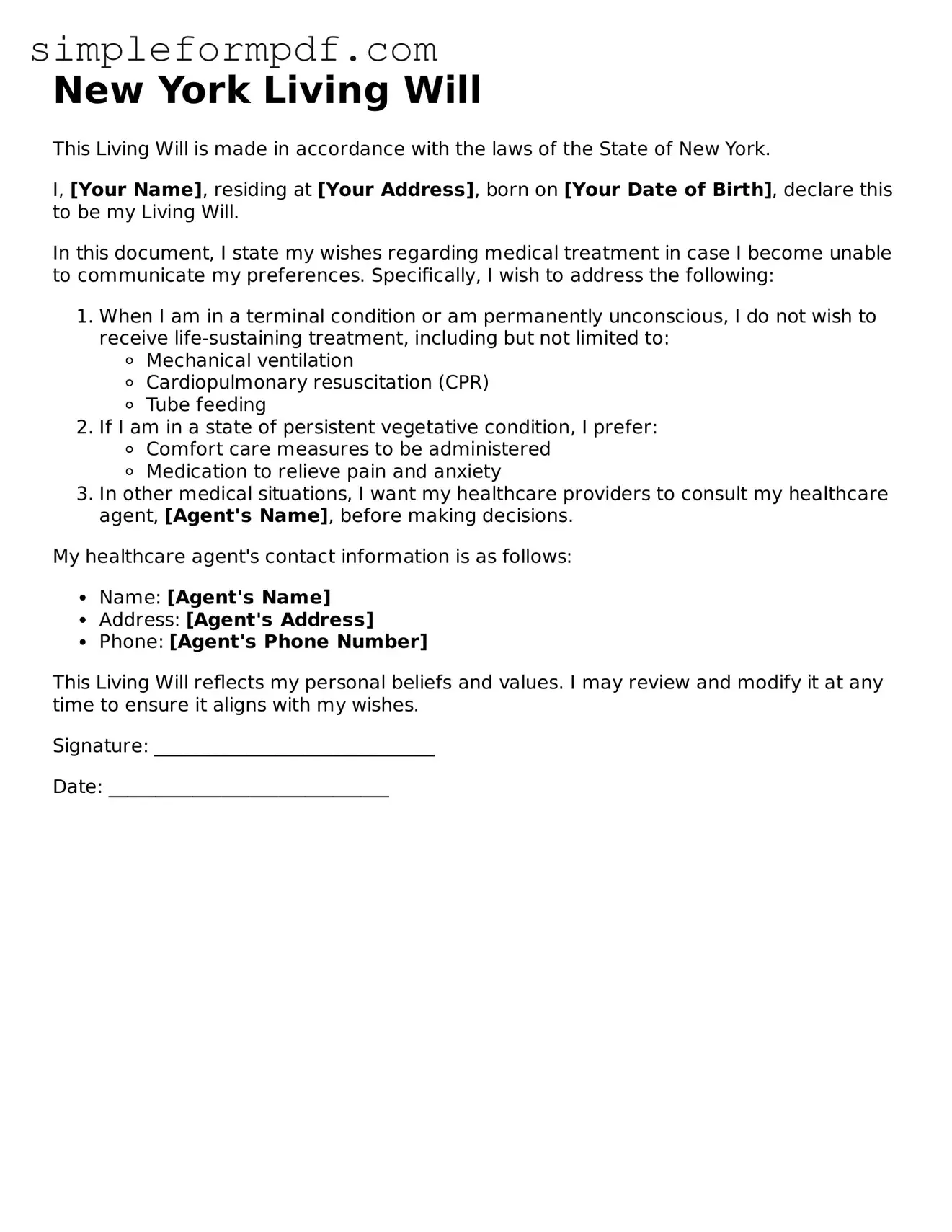New York Living Will
This Living Will is made in accordance with the laws of the State of New York.
I, [Your Name], residing at [Your Address], born on [Your Date of Birth], declare this to be my Living Will.
In this document, I state my wishes regarding medical treatment in case I become unable to communicate my preferences. Specifically, I wish to address the following:
- When I am in a terminal condition or am permanently unconscious, I do not wish to receive life-sustaining treatment, including but not limited to:
- Mechanical ventilation
- Cardiopulmonary resuscitation (CPR)
- Tube feeding
- If I am in a state of persistent vegetative condition, I prefer:
- Comfort care measures to be administered
- Medication to relieve pain and anxiety
- In other medical situations, I want my healthcare providers to consult my healthcare agent, [Agent's Name], before making decisions.
My healthcare agent's contact information is as follows:
- Name: [Agent's Name]
- Address: [Agent's Address]
- Phone: [Agent's Phone Number]
This Living Will reflects my personal beliefs and values. I may review and modify it at any time to ensure it aligns with my wishes.
Signature: ______________________________
Date: ______________________________
